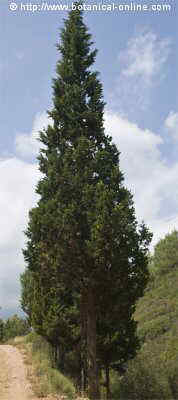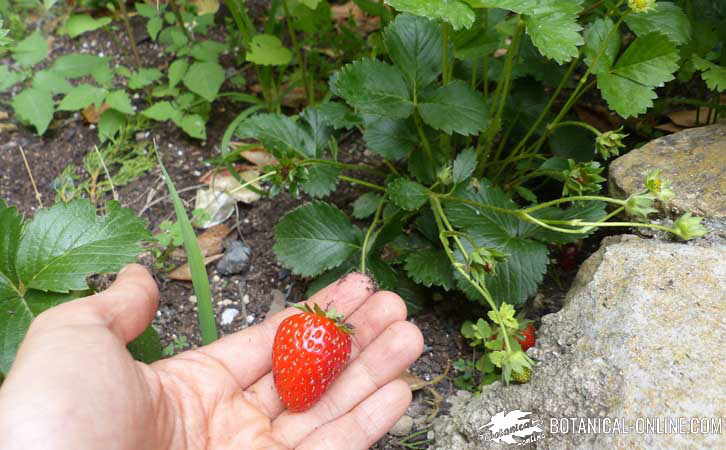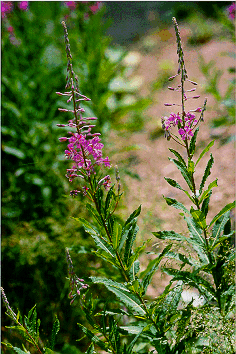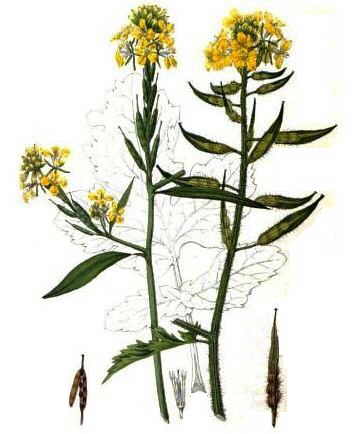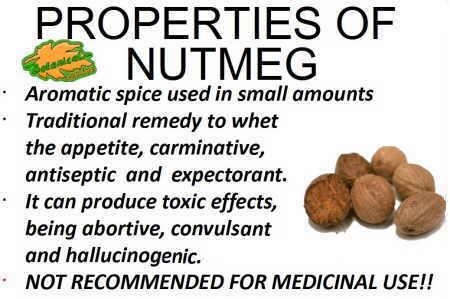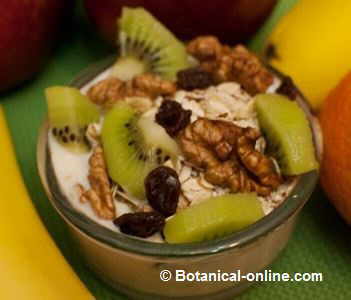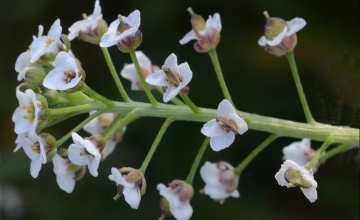Contents
How to grow eucalyptus
 Eucalyptus characteristics
Eucalyptus characteristics
Perennial tree of the myrtle family of 40 to 65 m in height.
Erect stems with bark of bluish gray.
Adult leaves alternate, lanceolate, up to 30 cm long, petiolate, with very strong midrib, dark green, shiny, hardened texture. Young leaves petiolated, not embracing the stem, gray-green and opposite.
Flowers solitary or 3 together in umbels with numerous very prominent stamens and no petals.
Woody fruit capsule up to 2.5 cm in length, with up to 4 cells that contain a large number of seeds.
 Eucalyptus watering
Eucalyptus watering
They are trees that are able to take profit of soil moisture thanks to their powerful roots that can reach the deep subsurface layers. A shallow root system also allows them to absorb a lot of water during the rains. Some of them are highly adapted to extreme arid conditions and can withstand rain below 300 liters per year.
For example Eucalyptus brockwayi and Eucalyptus salmonophloia are species used in North Africa for its drought resistance. Others, however, need at least 400 liters. In general, we can say that they prefer soils that are able to keep a little moisture.
Eucalyptus globulus Labill prefers constant rains, especially in winter, and moderate rains in summer. It needs between 700 and 1000 liters per year of rainfall.
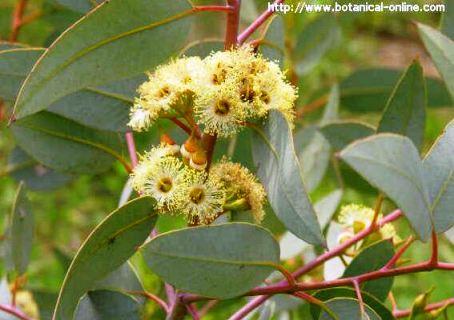
Eucalyptus flowers and leaves
 Eucalyptus uses
Eucalyptus uses
Traditionally in Australia, eucalyptus has been the most important tree for human and animal communities. Among the main uses of eucalytus, we have the following:
- Animal food: There are many animals that feed on them, such as koalas and sloths, which feed on the leaves. In the animal world, many insects use their young buds as food.
- Wood: The natives make use of the eucalyptus wood as fuel, for heating and cooking, as a shade tree, as a supplier of wood for their tools – boomerangs are made from dwarf eucalyptus or mallees. They have even learned to draw water from the roots of these trees.
- Clean the soil: When these trees were imported to other parts of the world, they were mainly used to clean marshy places for their ability to drain wetlands and eliminate harmful insects.
- Forest tree: Currently, eucalyptus trees are best used for forest plantations, mainly for the manufacture of paper pulp; for wood for different purposes depending on the species, (Furniture, beams for construction, tools or plates) and as fuel in poor countries.
- Oil producer: Because of the oil content in their leaves, trees are very productive for the chemical industry (solvents, flavorings, perfumes, insect repellents, etc.) for pharmaceuticals (cineol, terpineol, phellandrene, etc.). Even the liquor industry benefits from eucalyptus to produce liquors such as the famous Eucalittino of Rome.
- Honey species: Eucalypts in Australia are the most important honey plants achieving a very important production of high quality honey. Very important eucalyptus species for honey production are, for example:
- Eucalyptus goniocalix
- Eucalyptus cladocalix
- Eucalyptus camaldulensis
- Eucalyptus melliodora
- Eucalyptus viminalis
- Etc.
- Garden species: If we use the eucalyptus trees in our garden, we must keep in mind that these trees are very aggressive for the rest of the plants. With chemical fumes,they are able to eliminate the competing vegetation near them very easily.
We have to consider that within its scope no other plants can grow.
Also, we must realize that these trees have roots that are very long and powerful and that these could damage buildings.
If we want to plant an eucalyptus in our garden, especially we do not dispose of much space, it is better to use dwarf species. Another possibility is to use large wheeled containers to plant them and take them to the garden that interests us.
Eucalyptus garden species
Among the eucalyptus trees that can be used in the garden we have the following:
- Eucalyptus miniata
- Eucalyptus pyriformis
- Eucalyptus cinerea
- Eucalyptus phoenicea
- Eucalyptus caesia
- Eucalyptus torquata
- etc.
Eucalyptus globulus Labill can be planted in large decorative gardens but only when young. After looking lanky acquires too large which may impact on the rest of the vegetation. They are dangerous to attract lightning.
 Eucalyptus environment and exposure
Eucalyptus environment and exposure
Eucalyptus should be exposed to the sun. Although there are species highly resistant to frost as Eucalyptus gunnii, which is capable of supporting up to -18 ° C, they generally prefer warm climates and withstand heat better than cold.
Some widely used species such as Eucalyptus globulus or Eucalyptus regnans are capable of supporting up to -7 º C. However, there are many species that can not tolerate sustained temperatures below -7 ° C, as these burn their shoots.
Eucalyptus globulus Labill needs a mild climate, with the ideal temperature between 21ºC and 27 ° C. Its hardiness level is between -2 and -7 ° C.
 Eucalyptus reproduction
Eucalyptus reproduction
In nature, eucalypts are reproduced from the huge amounts of seeds these trees have. In intensive plantations, the method generally used is that one of planting by seed usually sown by planes.
Currently, it is being reproduced by the method of replanting seedlings produced in greenhouses.
This allows a greater selection of individuals which facilitates a better control of their characteristics. It should be noted that, once the plantation is well established and has begun to produce seeds, it is unavoidable to stop free reproduction because of seeds self-dispersion, so that it is not feasible to control the characteristics of the trees.
How to reproduce eucalyptus by seeds
Eucalyptus seeds can be harvested from the producing trees. After air drying, they can be stored for a long time provided that they are stored in a dry airtight container in a dark place.
This seed can be planted in trays in order to obtain small seedlings that must be transplanted into containers. Later, when the seedling has rooted well and grown, it will be planted in its final location.
 Eucalyptus. Soil and fertilizer, pests and diseases
Eucalyptus. Soil and fertilizer, pests and diseases
Eucalyptus support many soil types provided they have good drainage and, at the same time, the are able to retain moisture.
They do not like chalky soils, because they are responsible for chlorosis.
A soil with a pH between 5.5 and 6 would be ideal.
Regarding to fertilization, 20 or 25% of organic fertilizer could be provided, although it is not strictly necessary.
*See: Eucalyptus characteristics
![]() More information on eucalyptus.
More information on eucalyptus.

 Eucalyptus watering
Eucalyptus watering